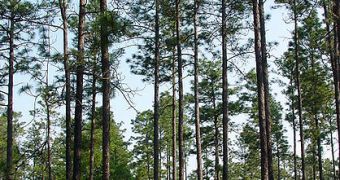Nowadays, human interventions succeeded in putting an end to the supremacy of the longleaf pine, which managed to preserve only 3% out off its initial territory. It's the beginning of a new era for the endangered forest ecosystem, since US military installations turned out to be their last, unexpected hope.
Taking into account large surfaces of land, from Virginia to Texas, researchers say that the times when the longleaf pine covered a 92 million-acre range are long gone. The economic boom translated in expanded agricultural practices, new roads and new buildings popping up in the middle of nowhere made the forests surrender their crown to parking lots, malls and other commercial buildings.
The present context influenced military bases like Fort Steward to focus their attention on endangered woodlands. As we speak, the US Department of Defense provides financial support to independent, long-term projects which are keen on establishing the fragile balance of such forests.
Preserving significant surfaces of land is crucial to the survival of the pine's ecosystems, which are the home of several creatures on the edge of extinction.
It's a difficult task, but biologists involved in this ambitious project hope to be able to restore a significant number of miles, while giving back to the tree population up to 9% of what was rightfully theirs years ago.
Conservationists joined efforts hoping that in 15 years they will be able to bury the bad luck for the longleaf pine, making it expand from 3.4 million acres to 8 million acres.
“The openness of the longleaf pine and the thin stands provides visibility and maneuverability that is very consistent with what a mechanized force like the Third Infantry division likes to fight in,” according to Tim Beaty, a U.S. Army wildlife biologist.
While talking about longleaf pine management, military bases seem to be the most viable choice for their safety.
At this point in time 66% of the endangered forest ecosystems are located in southwest Georgia, the Florida panhandle, and south Alabama and belong to private owners who sometimes don't have to think twice about selling their inheritance to major corporations, for a scrap of what they're really worth.
“Longleaf pine habitat usually gets chopped down and paved. That the military actually keeps large chunks of intact land is a godsend because the danger for these ecosystems is that they get developed into something like Walmart,” has affirmed John Orrock, a conservation biologist at the University of Wisconsin and the leader of the eco-project developed at Fort Stewart.

 14 DAY TRIAL //
14 DAY TRIAL //